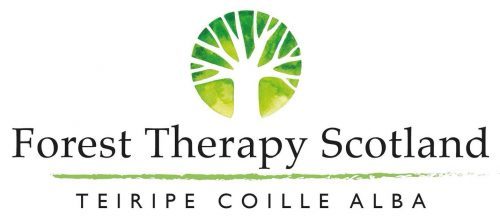Shinrin Yoku, a Japanese term meaning “Forest Bathing,” is a gentle, immersive practice that invites us to slow down and mindfully wander through the forest. It’s about deeply connecting with nature by engaging all of our senses – sight, sound, smell, taste, and touch – in a relaxed and open way. For centuries, cultures around the world have sought connection and healing through this kind of presence in nature, fostering a relationship with the more-than-human world.
Forest Therapy builds on this tradition, offering a science-based framework designed to support healing and wellness through immersive experiences in forests and natural settings. It incorporates the mindful awareness inspired by Shinrin Yoku, helping participants cultivate a profound connection with the environment.
The Science and Benefits of Forest Bathing
Modern research confirms what many traditional cultures have known intuitively: spending mindful time in nature brings significant health benefits, especially for those living in fast-paced, stressful urban environments. Some of the scientifically supported benefits include:
- Immune system boost: Time in forests increases natural killer cells, which help fight infections and cancer.
- Cardiovascular health: Lowers blood pressure and heart rate, promoting relaxation.
- Mental health improvements: Reduces anxiety, depression, and stabilizes mood.
- Enhanced cognition: Improves focus, creativity, and problem-solving skills.
To explore these benefits further, you can find and download relevant research and reports directly from the Forest Therapy Institute Research Lab by FTHub.
My Approach to Forest Therapy
Drawing from training with leading institutes, scientific research, and my own personal experience, I practice a unique blend of Forest Therapy approaches. This personalised method honours traditional teachings while integrating contemporary scientific insights to maximise healing and connection.
Key elements of my approach include:
- Mindful, intentional presence: Forest Bathing is not about rushing or exercise – it’s about moving slowly, opening your senses, and intentionally connecting with the natural world.
- Guided sensory activities: Through thoughtfully crafted activities, I help guide you to slow down and engage deeply with the forest’s rich sensory landscape.
- Ongoing relationship building: Like meditation or yoga, Forest Therapy is a practice developed over time. Regular immersion across seasons deepens your bond with nature.
- Core practices beyond walking: Sit spots, place tending, and cross-species communication are powerful tools incorporated to deepen your interaction with the forest and the wider ecosystem.
- Healing through reciprocal connection: We don’t just take from nature – we learn to listen and respond, fostering a mutually nourishing relationship.
How Forest Bathing Works
Forest Bathing and Forest Therapy involve a few core principles:
- Set a healing intention: Approach the experience with a desire to connect and heal through nature.
- Slow, mindful movement: Walk gently and mindfully, avoiding rushing or treating it like exercise.
- Engage all senses: Notice the subtle details of the environment – its sounds, textures, smells, and sights.
- Generous attention: Be present and open, allowing the natural environment’s messages to resonate with you.
- Return regularly: Cultivate an ongoing practice that deepens your connection over time.
Ready to Begin?
If you’re looking to support your health, find greater calm, or simply build a meaningful connection with the natural world, Forest Bathing offers a gentle, evidence-based practice to nurture both you and the planet. Like training a muscle, connecting with nature takes time and patience – some days it feels easy and light, and other times it can be challenging to focus or engage. The goal is not to switch off your mind or achieve a specific state, but rather to practice acceptance of whatever is present – both around you and within you – and to connect with what nature offers in each moment.
Many people who practice Forest Bathing share stories of meaningful experiences, some deeply emotional. While these can happen, the practice is about ongoing connection rather than a singular transformation. As a certified guide, I provide a safe space to support your experience and help you feel held and supported throughout.
Where to Learn More & Recommended Forest Bathing Books
For those interested in deepening their understanding of Forest Bathing and the benefits of nature connection, here are some of my favourite resources:
- The Art of Forest Bathing by Dr. Qing Li
A comprehensive guide by a leading expert on Shinrin Yoku, detailing the science and practice of forest bathing. - Shinrin Yoku: The Japanese Art of Forest Bathing by Dr. Qing Li
An accessible introduction to the practice, emphasising its health benefits and cultural roots. - Your Guide to Forest Bathing by M. Amos Clifford
A practical manual from the founder of the Association of Nature & Forest Therapy, offering structured invitations for immersive experiences. - Forest Therapy by Hannah Fries
Combines scientific research with personal anecdotes to illustrate how forest immersion promotes well being. - Braiding Sweetgrass by Robin Wall Kimmerer
A poetic blend of Indigenous wisdom and scientific knowledge, exploring the reciprocal relationship between humans and plants. - The Nature Fix by Florence Williams
Investigates how spending time in nature can improve mood, health, and creativity, backed by scientific research. - The Hidden Life of Trees by Peter Wohlleben
Reveals the complex social networks of trees and their communication methods, offering a new perspective on forest ecosystems. - Blue Mind by Wallace J. Nichols
Explores the calming and restorative effects of water on the human brain, highlighting the benefits of aquatic environments. - The Book of Nature Connection by Jacob Rodenburg & Nisa Sprokkereef
Provides 70+ activities designed to foster a deeper bond with nature, suitable for individuals and groups. - The Nature Connection Workbook by Clare Walker Leslie
Offers practical exercises and prompts to encourage observation and reflection in natural settings.
These books serve as valuable resources for anyone looking to deepen their understanding and practice of connecting with nature. Whether you’re seeking scientific insights, practical guidance, or personal narratives, these selections provide diverse perspectives on the healing power of the natural world.
